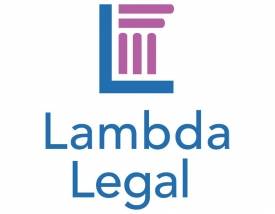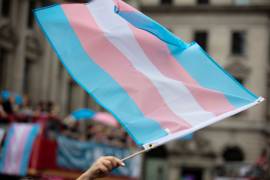
Ending the "Panic"
Blog Search
This post originally appeared on Lambda Legal's blog on August 29, 2013.
This post was co-authored by Lambda Legal Fair Courts Project Manager Eric Lesh and Senior Staff Attorney Thomas W. Ude.
Last week, in the latest of what seems like an endless string of tragedies, a young transgender woman, Islan Nettles, died as a result of injuries inflicted during a brutal attack.
Islan’s attacker shouted anti-trans and antigay slurs at her and punched her repeatedly in the face—over and over and over again—even after he had already knocked her to the ground. Islan was 21 years old when her mother, Delores, faced a parent’s nightmare of having to decide whether to remove her child from life support. Delores vows, “I want my baby to get justice.”
Police are investigating the incident as a hate crime. But some reports thought it pertinent to add that Islan’s killer had “made a pass” at her and was “shocked” and “humiliated” when he learned (in some unspecified way) that Islan was transgender—supposedly prompting the attack.
“Wait, what?” you might wonder. “Why is that relevant?” It is not. But in the past, those accused of killing other people who are transgender have tried to escape justice by blaming their victim—asserting that the discovery of their victim’s gender identity or sexual orientation justified the attack. Blame-shifting efforts like these have happened frequently enough that they have names: “gay panic” and “trans panic.” Neither “gay panic” nor “trans panic” is officially a defense to murder, but the terms describe defense strategies that try to bolster claims of insanity, self-defense and provocation.
Sometimes the defenses succeed. In 1995, lawyers for Jonathan Schmitz claimed that “gay panic” caused him to shoot and kill his friend Scott Amedure because Scott had revealed that he had crush on Jonathan on The Jenny Jones Show. Three days later, Schmitz went to the bank, withdrew money for a shotgun, bought the gun, and then drove to Scott’s trailer and shot him twice in the heart. Despite that evidence, the jury acquitted Schmitz of first-degree (premeditated) murder, and convicted him of the lesser, second-degree, murder.
Indeed, “panic” defenses have even allowed killers to go free. In 2009, Joseph Biedermann stabbed his neighbor, Terrance Hauser, 61 times. Biedermann claimed he was fending off a sexual advance, and the jury acquitted him.
These defenses are legal relics. They allow a defendant to enlist the judge and the jury’s support (or, at least, empathy) for the defendant’s antigay or anti-trans bias, by asking the justice system to excuse the killing as an “understandable” response to finding out that the victim was LGBT.
Violence is never excusable. As Islan’s recent death and other tragic deaths show, LGBT people continue to be threatened with violence simply for being themselves. Many times, the defendant is not caught. But when a suspect is caught, we look to courts for justice, not to reinforce the prejudices that fueled the attack in the first place.
Recently, the American Bar Association unanimously adopted a resolution urging federal, state and local governments to pass laws that will curtail the availability and effectiveness of "gay panic" and "trans panic" defenses. This requirement is modeled after an existing California law, enacted in 2006 after a trial of two men who beat 17-year-old Gwen Araujo to death, in which the men argued—unsuccessfully—that the beating was the result of their emotional response (in other words, “trans panic”) upon learning that Gwen was transgender.
Lambda Legal agrees with the ABA that these defenses have no place in our justice system, and should be kept out of the courtroom. But even without legislation, judges and attorneys have the power to keep these bias-enforcing defenses out of our courtrooms. Several courts have refused to allow “panic” defenses, holding that they are not legally sufficient, and that evidence supporting them is inadmissible to establish or support insanity and provocation claims. Judges can and should refuse to admit evidence, arguments and jury instructions on a lesser charge when the theory offered by the defendant—insanity, provocation or self-defense—attempts to invoke “gay panic” or “trans panic.” Attorneys can and should object to arguments and the introduction of evidence designed to support these claims. Education and training can also provide judges and lawyers with best practices for dealing with attempts to assert these defenses.
But while ending the use of these defenses will help to curb explicit LGBT bias in open court, there is still the very real danger that subconscious or implicit bias can find its way into the proceeding and affect the outcome of a case. Proper jury selection should include questions designed to exclude jurors who will sympathize with the defendant’s anti-LGBT bias. And it is important that parties request, and that judges provide, instructions to the jury not to allow societal bias or prejudice based on sexual orientation or gender identity influence their decision, similar to instructions that are given concerning racial and other biases. The ABA resolution calls on legislatures to mandate that such instructions be provided.
This October will mark the 15th anniversary of the brutal killing of Matthew Shepard. Both of his attackers attempted to rely on a “gay panic” defense during their criminal trials, but after one defense attorney raised the “panic” argument in his opening statement, the judge quickly barred the defense from asserting that defense and from introducing evidence to support it. Each of Matthew’s killers is serving a double life sentence.
We look forward to the day when these crimes end, and when we stop losing members of our community because of anti-LGBT violence. Until that day, however, we share Delores’s desire for justice—for Islan, and for the others who have been killed because they are trans or gay or bisexual or lesbian. Federal law targets crimes driven by anti-LGBT and other biases. Eliminating the availability of gay and trans “panic” defenses is another important step forward, as are other efforts to rid the legal system of anti-LGBT bias.
It is too late to bring back the people we have lost to anti-LGBT violence, but it is never too late to take action to ensure that their killers are unable to manipulate biases—whether explicit or implicit—to escape justice for their crimes.




